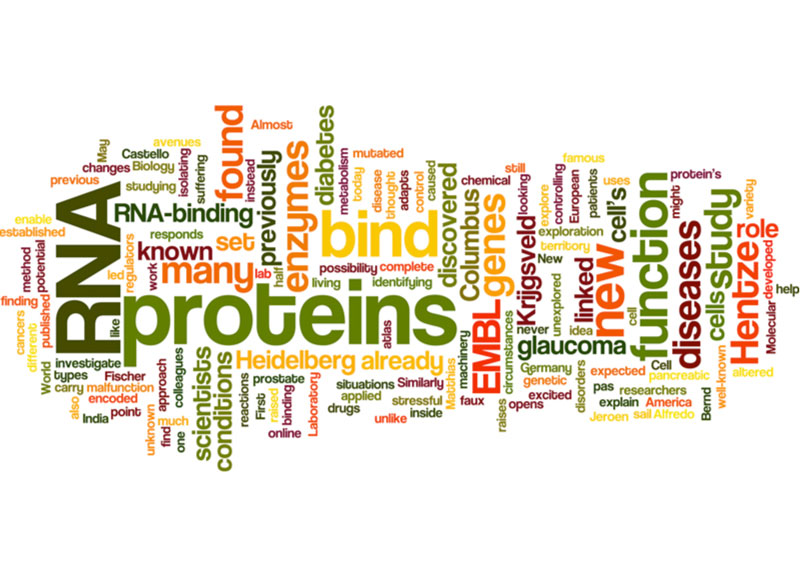The cell’s ‘New World’
First complete atlas of RNA-binding proteins could point to function of genes linked to diseases

In one of the most famous faux pas of exploration, Columbus set sail for India and instead ‘discovered’ America. Similarly, when scientists at the European Molecular Biology Laboratory (EMBL) in Heidelberg, Germany, set out to find enzymes – the proteins that carry out chemical reactions inside cells – that bind to RNA, they too found more than they expected: 300 proteins previously unknown to bind to RNA – more than half as many as were already known to do so. The study, published online today in Cell, could help to explain the role of genes that have been linked to diseases like diabetes and glaucoma.
“We are very excited that, unlike Columbus, we found what we were looking for: well-known enzymes that bind to RNA,” says Matthias Hentze, who led the study at EMBL with Jeroen Krijgsveld. “But we never thought there was still so much unexplored territory, so many of these RNA-binding proteins to be discovered.”
Almost 50 of the new proteins Hentze and Krijgsveld found are encoded by genes known to be mutated in patients suffering from a variety of diseases, from diabetes and glaucoma to prostate and pancreatic cancers. This finding opens new avenues for researchers studying these disorders. It raises the possibility that such conditions could be caused by a malfunction not in the protein’s previously established function, but in its potential role in RNA control.
The idea that enzymes might also function as genetic regulators, by binding to RNA and controlling its function, had already been raised by previous work in the Hentze lab. To investigate further, Alfredo Castello, Bernd Fischer at EMBL and colleagues developed a new method for identifying and isolating all proteins that bind to RNA in living cells. The new approach will have many further uses, as it can be applied to other cell types and conditions, to explore which proteins bind to RNA under different circumstances. This will enable scientists to study how the cell’s machinery adapts to stressful situations, responds to drugs or to changes in metabolism, or is altered in disease.
The work was carried out in collaboration with Thomas Preiss from The John Curtin School of Medical Research at The Australian National University and the Victor Chang Cardiac Research Institute, also in Australia.
Article Abstract
RNA-binding proteins (RBPs) determine RNA fate from synthesis to decay. Employing two complementary protocols for covalent UV-crosslinking of RBPs to RNA, we describe a systematic, unbiased and comprehensive approach, termed “interactome capture”, to define the mRNA interactome of proliferating human HeLa cells. Of the proteins captured with polyadenylated RNA, 860 qualify as RBPs by biochemical and statistical criteria. Following validation, the in vivo HeLa mRNA interactome adds more than three hundred RBPs to those previously known. Interactome capture is broadly applicable to study mRNA interactome composition and dynamics in varied biological settings. Our data shed light on diverse aspects of RNA biology, including RBPs in disease, RNA-binding kinases and RNA-binding architectures. We also identify enzymes of intermediary metabolism that moonlight as RBPs in vivo, implicating these in the recently proposed REM (RNA/enzyme/metabolite) networks.



